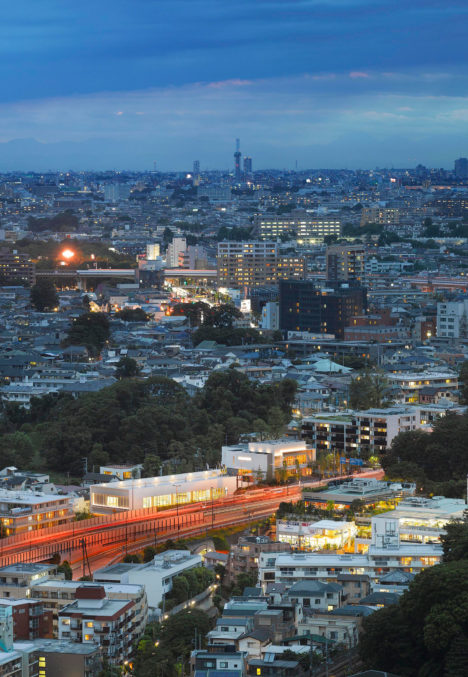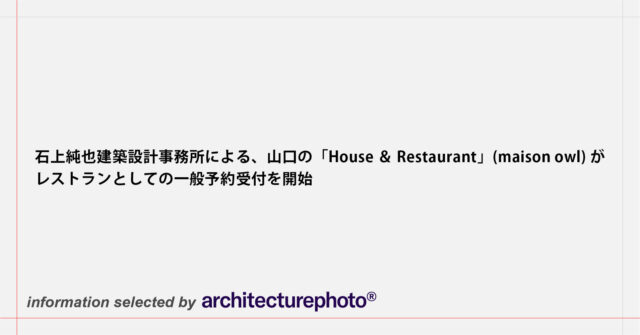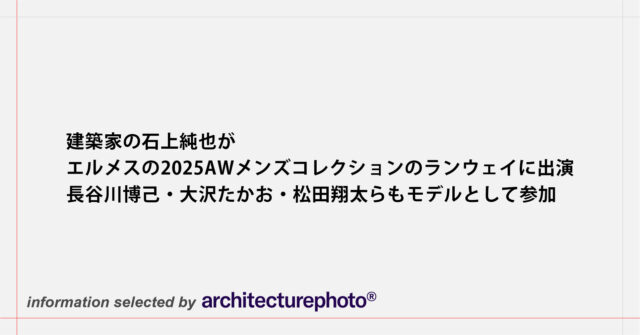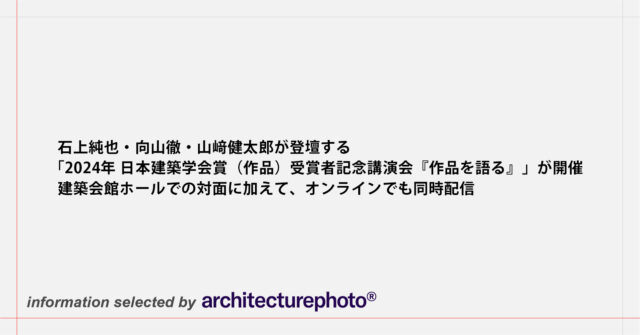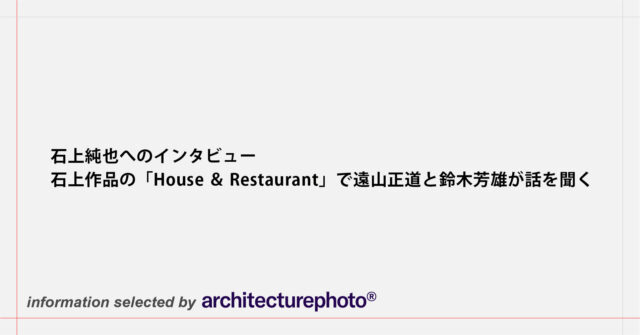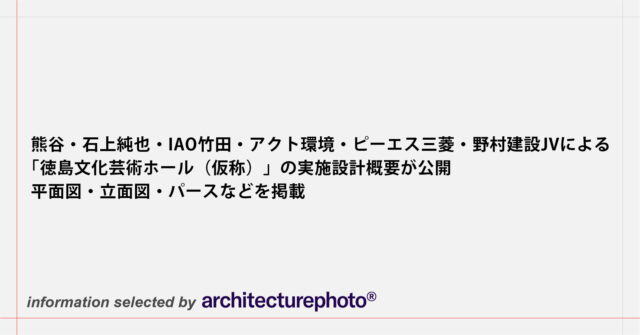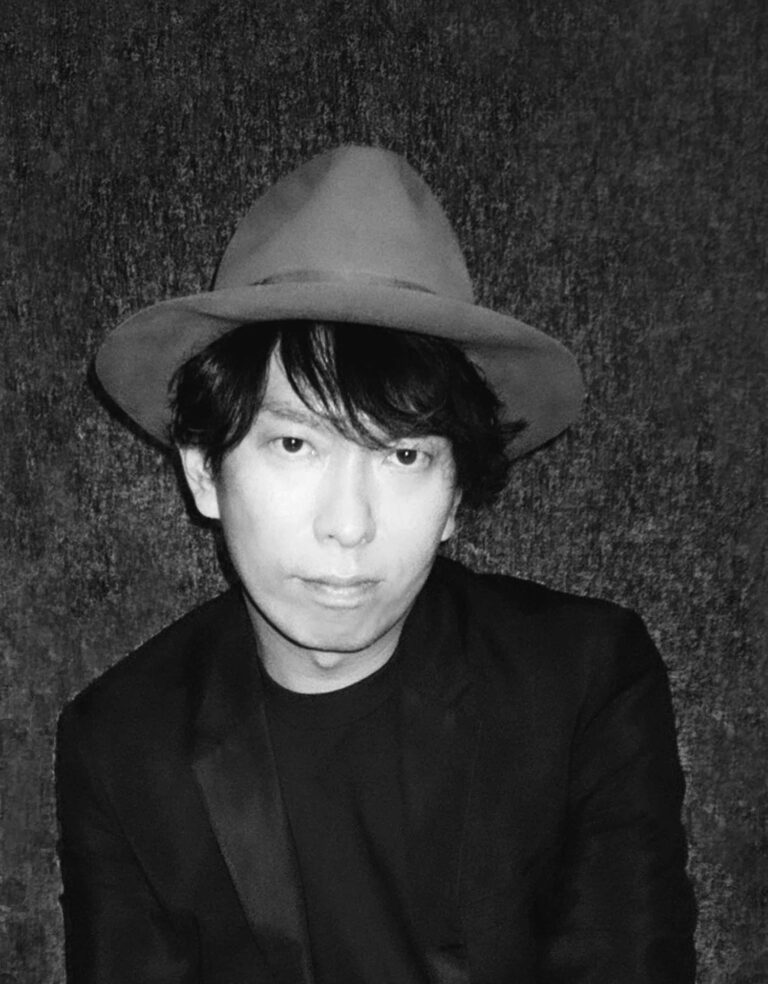
SHARE 石上純也が、2024年のフレデリック・キースラー建築芸術賞を受賞

石上純也が、2024年のフレデリック・キースラー建築芸術賞を受賞しています。
こちらはリリーステキストの翻訳です
第13回オーストリアン・フレデリック・キースラー賞の建築・芸術部門は石上純也に決まる
オーストリアン・フレデリック・アンド・リリアン・キースラー私設財団は、日本の建築家・石上純也が、建築と芸術の分野で最も資金提供された国際賞のひとつであるフレデリック・キースラー賞を受賞したことを発表します。
1974年に神奈川県で生まれた石上純也は、国際的な建築シーンで最も卓越した才能の一人です。プリツカー賞を受賞した妹島和世のSANAAに長年勤務した後、2004年に自身の事務所junya.ishigami+associatesを設立しました。彼の作品のユニークさと型破りなプロジェクトへの取り組み方は、瞬く間に認められ、多くの賞を受賞することになりました。2009年には史上最年少で日本建築学会賞を受賞、2010年にはヴェネツィア・ビエンナーレ建築展で金獅子賞を受賞、2019年には新設されたオベル・アワードの初代受賞者となりました。2010年から東北大学で教鞭をとり、2014年にはハーバード大学デザイン大学院(米国)で丹下健三デザインクリティックに任命されました。
石上にとって建築とは、人生のあらゆる領域に広がる無限の可能性を秘めたオープンフィールドであり、あらゆる必要不可欠な問題を提起するものであり、芸術的であると同時に科学的な観点から考察されるべきものでなのです。一見、建築のルールや制約から解き放たれたように見える石上は、主に自然の中に自身のプロジェクトの文脈を見出しています。そして、ランドスケープと建築の境界の再解釈に焦点を当て続けています。彼のコンセプチュアルな思考は、建築と “自然 “を織り交ぜ、デザイン、建築、環境の間の既存の境界線を伸ばしたいという衝動によって形作られています。その集中性、透明性、シンプルさを特徴とする先見性のあるデザインで、石上は、社会の生活が有機的な原理に従って構成されるような、未来の建築の全体的な探求に乗り出しています。
石上の主なプロジェクトには、神奈川工科大学KAIT工房(厚木、日本、2008年)、コペンハーゲンのHouse of Peace(2014年)、山東省の谷の教会(中国、2016年)、ボタニカルガーデンアートビオトープ「水庭」(栃木、日本、2018年)、サーペンタイン・パヴィリオン(ロンドン、2019年)などがあります。
私は、尊敬されるフレデリック・キースラー賞(建築・芸術部門)を受賞できたことを光栄に思うと同時に、財団と審査員の方々に心から感謝の意を表したいと思います。この評価は、卓越性を追求するため、建築の限界に挑戦し続ける私を鼓舞するものです、と石上純也は最初の声明で述べています。
彼の建築において、石上純也は内と外との流動的な遷移を形作ることに卓越した理解を持っています。キースラーの終わりなきものと自然の流動という考え方は、その動きをアートに置き換えるべきものであり、石上の作品においては、環境と内部の境界線の溶解に呼応しています。私は、私たちがキースラー賞の受賞者として、石上純也のような価値ある人物を見つけたことを嬉しく思います。彼のの有機的な建築のヴィジョンは、自然と人工物との調和を生み出すと同時に、私たちを魅了します。と、ウィーン市文化・科学担当参事官ヴェロニカ・カウプ=ハスラー氏は強調しました。
石上純也は、現代の国際建築シーンにおける傑出したビジョナリーです。伝統的な枠組みや 慣例にとらわれない彼のデザインは、一貫して人間とその周囲の環境との関係や、自然の営みと人間との関係に焦点を当てており、まさにフレデリック・キースラーの精神を受け継いでいます。ロンドンのサーペンタイン・ギャラリーのパヴィリオンや コペンハーゲンのHouse of Peaceなど、石上の建築物は超現実的で、ほとんど夢のような質を持っています。彼は、建築物とは何かという私たちの基本的な考えを常に問い直し、風景や水、雲、森といった自然界の要素を、これまでにない方法で作品に取り入れています。このユニークで画期的な建築的アプローチにより、石上純也はフレデリック・キースラー賞の受賞者に非常にふさわしいと、アンドレア・メイヤー芸術文化担当国務長官は述べています。
オーストリアン・フレデリック・アンド・リリアン・キースラー私設財団は、今回の選出を特に喜んでいます。
石上純也は、若い世代で最も興味深い建築家の一人です。その粘り強い姿勢と先見性のある仕事ぶりは、キースラー賞受賞者として申し分ありません。彼の詩的で彫刻的な建物のデザインは、常に建築、アート、ソーシャルデザインの接点にあり、この分野を新たなレベルに引き上げています。建築産業が商業的な側面を中心に、建築のあるべき姿を所有するようになった一方で、石上は独自の妥協のない道を歩み、先見性のあるプロジェクトを実現しています。彼の特異なプロジェクトはどれも、その美学においてユニークであり、現代の個々の状況や問題について言及しています。それによって、彼は自分の職業の境界を絶えず広げ、超越し、未来に向けて新たな基準を設定ます(エルケ・デルガン・マイスル財団理事長)
代表作品
以下の写真はクリックで拡大します




以下、リリーステキストです
The 13th Austrian Frederick Kiesler Prize for Architecture and the Arts goes to Junya Ishigami
The Austrian Frederick and Lillian Kiesler Private Foundation is delighted to announce that the Japanese architect Junya Ishigami has been awarded the Frederick Kiesler Prize for Architecture and Art, one of the most highly endowed international prizes in this field.
Born in Kanagawa Prefecture in 1974, Junya Ishigami is one of the most exceptional talents on the international architecture scene. After spending many years in the office of the Pritzker Prize laureate Kazuyo Sejima, SANAA, he established his own firm, junya.ishigami+associates, in 2004. The uniqueness of his work and the unconventional way in which he approaches his projects led to swift recognition and the award of many prizes. In 2009, he became the youngest ever recipient of the Architectural Institute of Japan Prize; in 2010, he received the Golden Lion of the Architecture Biennale in Venice; and in 2019 he was the first winner of the newly created Obel Award. He has taught at Tohoku University in Japan since 2010 and was appointed Kenzo Tange Design Critic at Harvard Graduate School of Design (USA) in 2014.
For Ishigami, architecture is an open field of infinite possibilities that extends into every area of life, raises all the essential questions, and should be considered from a perspective that is as scientific as it is artistic. Apparently liberated from the rules and constraints of architecture, Ishigami predominantly finds the context for his projects in nature. And he has a continuing focus on the reinterpretation of the boundary between landscape and architecture. His conceptual thinking is shaped by an urge to interweave architecture with the “natural” and to stretch the existing frontiers between design, architecture, and the environment. With his visionary designs, whose aesthetic is characterized by their concentration, transparency, and simplicity, Ishigami is embarking upon a holistic search for an architecture for the future, in which the life of society is structured according to organic principles.
Ishigami’s major projects include KAIT Workshop for the Kanagawa Institute of Technology (Atsugi, Japan, 2008); the House of Peace in Copenhagen (2014); the Chapel of the Valley in Shandong (China,2016); the Art Biotop Water Garden (Tochigi/Japan, 2018); and his pavilion for the Serpentine Gallery(London, 2019).
I am honoured to receive the esteemed Frederick Kiesler Prize for Architecture and the Arts, and want to extend my heartfelt gratitude to the Foundation and the jury. This acknowledgment inspires me to continue pushing the boundaries of architecture in the pursuit of excellence, says Junya Ishigami in a first statement.
In his architecture, Junya Ishigami has a masterly understanding of the shaping of fluid transitions between inside and outside. Kiesler’s idea of endlessness and of the flux of nature, whose movement should be transposed into art, corresponds in the work of Ishigami to a dissolution of the boundaries between environment and interior. I am delighted that we have found such a worthy recipient of the Kiesler Prize as Junya Ishigami, whose organic architectural visions fascinate us just as much as they create harmony between nature and the human-made, emphasized Vienna’s Executive City Councillor for Cultural Affairs and Science Veronica Kaup-Hasler.
Junya Ishigami is an outstanding visionary on the contemporary international architecture scene. His designs, which defy traditional boundaries and conventions, and consistently focus on the relationships between people and their surroundings and between the works of nature and of humankind, make him a true kindred spirit of Frederick Kiesler. Ishigami’s structures – such as his pavilion for the Serpentine Gallery in London or the House of Peace in Copenhagen – have a surreal, almost dreamlike quality. He is constantly reexamining our fundamental ideas about what a building really is, and he incorporates elements of the natural world – such as landscape, water, clouds, and forest – into his works in ways that have never been seen before. Thanks to this unique and groundbreaking architectural approach, Junya Ishigami is an extremely deserving winner of the Frederick Kiesler Prize, says Andrea Mayer, Secretary of State for Arts and Culture.
The Austrian Frederick and Lillian Kiesler Private Foundation is particularly delighted about the choice:
Junya Ishigami is one of the most interesting architects of the younger generation. Both his persistent attitude and his visionary work make him the perfect Kiesler Prize winner. His poetically sculptural building designs are always at the interface of architecture, art and social design and take the discipline to a new level. While the building industry has taken over the ownership of what architecture should look like, with a focus on commercial aspects, Ishigami follows his own uncompromising path in realizing his visionary projects. Each of his idiosyncratic projects is unique in its aesthetics and refers to the individual circumstances and problems of our time. Thereby he continuously expands and transcends the boundaries of his profession and sets new standards for the future. (Elke Delugan-Meissl, President of the Foundation)

